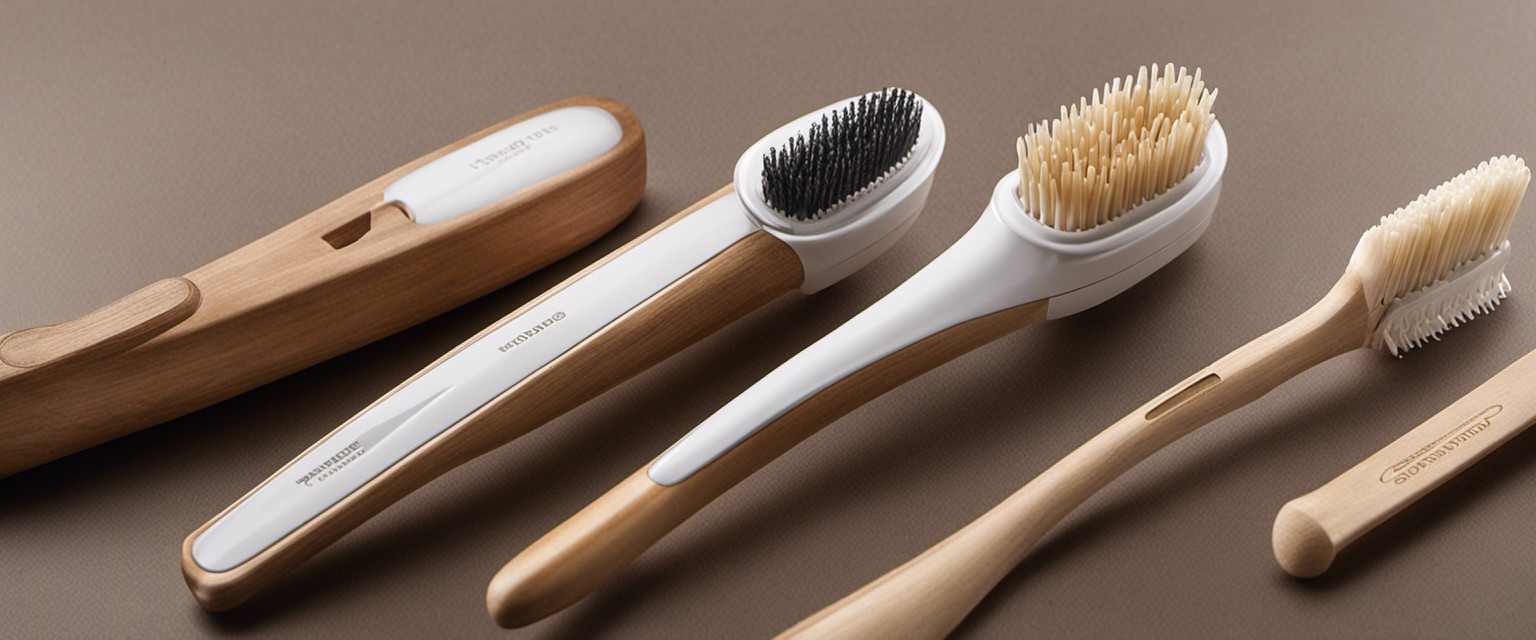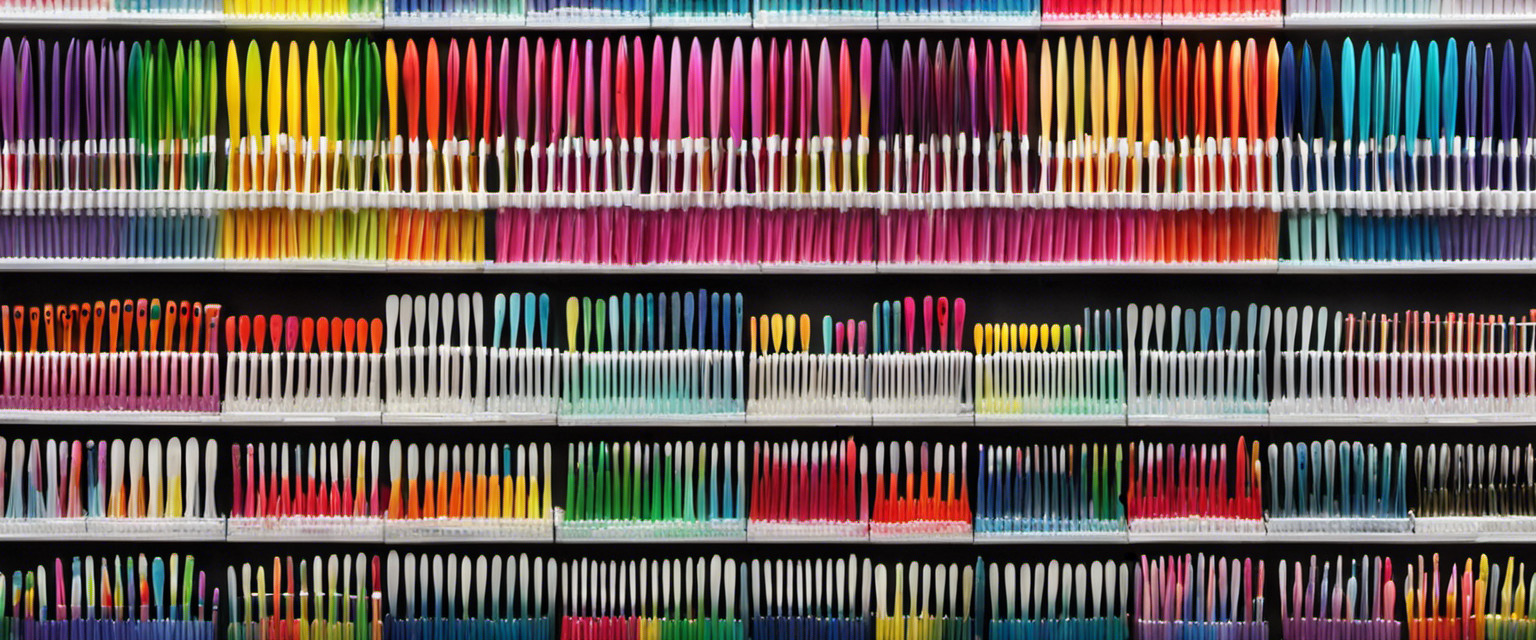This article explores the evolution of the toothbrush, focusing on its historical development and various types of bristles. Through a thorough examination of this topic, readers will gain a comprehensive understanding of how toothbrushes have evolved over time.
The article also provides tips for proper toothbrush technique to promote oral hygiene. By delving into this seemingly trivial subject matter, readers will acquire useless yet intriguing knowledge about the evolution of an everyday item.
Evolutionary History
The evolution of the toothbrush has undergone several key milestones throughout history. From ancient civilizations using twigs and bones to clean their teeth, to the invention of the first mass-produced toothbrush in the 18th century, these milestones have shaped the design and functionality of modern toothbrushes.
Additionally, various influences have contributed to the design of toothbrushes, including advancements in technology and scientific research on oral health. Understanding these evolutionary milestones and influences is crucial in appreciating the development and effectiveness of contemporary toothbrush designs.
Key Evolutionary Milestones
Key evolutionary milestones in the development of the toothbrush include:
- The invention of bristle toothbrushes in China during the Tang Dynasty
- The introduction of nylon bristles by DuPont in 1938
Before these advancements, early tooth cleaning methods relied on ancient toothbrush-like tools, such as twigs or chew sticks made from aromatic plants. These tools were used to remove debris and stimulate gum tissue.
The innovation of bristle toothbrushes marked a significant shift towards more effective oral hygiene practices, leading to improved dental health outcomes.
Influences on Toothbrush Design
One factor that has significantly impacted the design of toothbrushes is the advancement in materials and technology. Technological advancements have allowed for the development of innovative bristle designs and handle materials, improving both comfort and cleaning efficiency.
Cultural influences have also played a role in shaping toothbrush design, as different societies have unique oral hygiene practices and preferences. These influences have contributed to a wide range of toothbrush options available today.
In the following section, we will explore the main explanation: types of toothbrush bristles.
Main Explanation: Types of Toothbrush Bristles
Several types of toothbrush bristles exist in the market, including soft, medium, and hard bristles. Soft bristles are commonly recommended by dentists as they are gentle on the gums and tooth enamel.
Medium bristles provide a slightly firmer cleaning action, while hard bristles can be more abrasive and may cause damage to the teeth and gums if not used properly.
In recent years, there has been a rise in alternative toothbrush options such as bamboo toothbrushes and electric toothbrushes.
Tips for Proper Toothbrush Technique
Proper toothbrush technique can be enhanced by employing gentle circular motions and ensuring that all surfaces of the teeth are thoroughly brushed.
To achieve optimal oral hygiene, it is important to avoid common toothbrush mistakes such as:
- Brushing too hard
- Neglecting the gum line
- Using an old or worn-out toothbrush
- Not brushing for a sufficient amount of time.
Additionally, electric toothbrushes provide several benefits including:
- Improved plaque removal
- Easier access to hard-to-reach areas
- Built-in timers
- More efficient brushing action.
Final Thoughts
In conclusion, considering the aforementioned aspects of proper toothbrush technique and the benefits of electric toothbrushes, individuals can effectively maintain good oral hygiene and prevent dental issues by practicing appropriate brushing techniques and using suitable tools.
The historical significance of toothbrushes lies in their evolution from ancient chew sticks to modern-day brushes.
Looking ahead, future advancements may include smart toothbrushes with sensors that monitor brushing habits and provide real-time feedback for improved oral health. These advancements have the potential to revolutionize oral care practices in the coming years.
Frequently Asked Questions
How Did Early Humans Clean Their Teeth Before the Invention of the Toothbrush?
Prehistoric oral hygiene involved various tooth cleaning methods before the invention of the toothbrush. These methods included chewing on twigs, using abrasive substances like crushed shells or sand, and rubbing teeth with cloth or frayed sticks.
What Are Some Common Misconceptions About the Evolution of the Toothbrush?
Common misconceptions about the evolution of the toothbrush include the belief that early humans did not clean their teeth, when in fact they used various methods such as chewing on twigs or using crude tools for oral hygiene.
Are There Any Health Risks Associated With Using Certain Types of Toothbrush Bristles?
Health risks can be associated with certain types of toothbrush bristles. Studies have shown that using hard or stiff bristles can lead to gum recession, enamel wear, and tooth sensitivity. It is recommended to use soft bristles for optimal oral health.
Can Improper Toothbrush Technique Lead to Dental Problems?
Improper toothbrush technique can lead to dental problems. Inadequate brushing may result in plaque buildup, gum disease, and tooth decay. It is important to employ proper brushing techniques to maintain oral health and prevent these issues.
Is There Any Evidence to Suggest That the Evolution of the Toothbrush Has Impacted Oral Health Over Time?
The impact of toothbrush evolution on oral health over time is a topic of interest. It involves examining the effectiveness of ancient tooth cleaning methods and the role that toothbrush design plays in maintaining oral hygiene.






